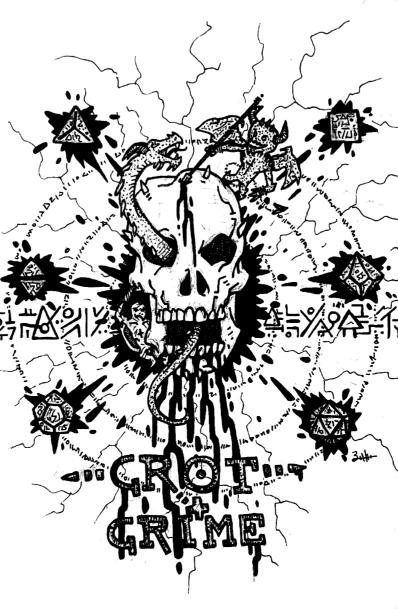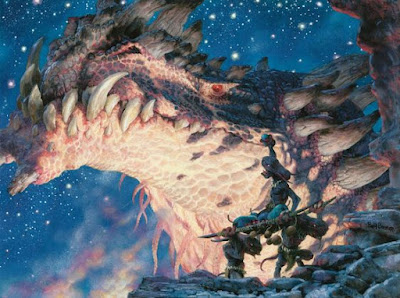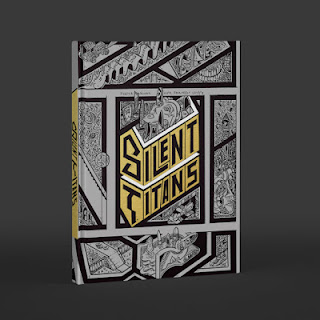In dark places deep beneath the earth where lie the rotting corpses of civilizations past...
In the cursed city of Moldberg, moldering in time, twisted by fell things from beyond the stars...
In the Gnarlwood, where trees wrinkle and gnarl with age, and bright yellow eyes flit between the bent bows...
In the towers of long-dead wizards where demonic chittering is heard, unseen among yellowing tomes and jars of writhing things...
In the depths of the sewers where bronze lion faces spout filth and the discarded wretches of humanity moan and wail...
...there is only GROT AND GRIME!
Art Commissioned from Zeph Siebler
Main Mechanic:
Roll high on a d20, adding an appropriate attribute as determined by your GM.
DC: 10 for easy checks. DC: 15 for middling checks. DC: 20 for very difficult tasks.
The same is true for attacking enemies: DC: 10 for minor mooks, DC: 15 for trolls and larger enemies, DC: 20 for Dragons and Greater Villains.
Character Creation:
Failed Career:
Gain a Random Background and its starting items.
Attributes:
Roll 1d6-2 for each of the following attributes:
Strength: Physical power, attacking with force, kicking down doors
Constitution: Hardiness, physical defense, toughness, resisting poison
Dexterity: Manual dexterity, agility, speed, hand-eye coordination
Intelligence: Brains, wits, knowledge, arcana
Personality: Charisma, willpower, attractiveness
Oddities and Weirdness:
For every attribute that is 0 or -1, roll once on the Oddities and Weirdness Table below, rerolling any repeats. You may also set one of your stats to -1 if you want to roll on the chart but have all positive scores.
1d10 Oddities and Weirdness:
- A demon familiar has chosen you in much the same way cats choose their humans. It doesn't really serve you but might be persuaded to help. (Gain a Random Demon Familiar)
- You found an old book full of arcane secrets in a forgotten place. (Gain a Random Grimoire)
- Strange radiation or a witch's curse has transformed you. (Gain a Good Mutation. Roll 1d30 on the list)
- You have discovered a strange bobble in some old tomb. (Gain a Random Minor Magic Item)
- An ancient warrior's bones clutched this weapon tightly even in death. (Gain a Random Minor Magical Weapon.)
- Wizard or not, you have somehow gained a Wizard Gimmick! (Gain a Random Wizard Gimmick)
- You are one of the subhuman races which dwell in Moldburg. (Roll for or pick a Subhuman Race)
- The ways of the elves of old, fair and bright, have long survived their civilization. (Gain a Random Elf Trick.)
- You learned a trick from the village Wise Woman. (Gain a Random Mundane Magic)
- You trained with some priests for a while. (Gain a Random Divine Mundanity)
Roll HP:
Roll 2d6+Con to determine HP.
Pick a Starting Package:
Warrior: You gain a Weapon of your choice (Light: 1d4, Medium/Ranged: 1d6, Two-Handed: 1d8) or a Shield (Negate 1 Attack per Day. Takes an Arm) You may add +1 to all attacks and damage you make with weapons.
Thief: You can add 1d6 to all checks involving sneaking, skullduggery, thieving, acrobatics, lockpicking, ect. You can also add 1d6 to attacks and damage made from stealth. You may also reroll one failed check per day.
Wizard: You gain a
Random Grimoire. You may add 1 to all checks made for casting spells and knowing things.
Pick and Roll Starting Gear:
Gain 1d6 Rations and Torches.
Gain a Weapon of your choice: (Light: 1d4, Medium/Ranged: 1d6, Two-Handed: 1d8)
Roll a Weapon Descriptor for all your weapons (1d20):
- Jagged
- Bloodstained
- Slimy
- Sticky
- Wicked
- Rusty
- Spiked
- Grimey
- Old
- Scorched
- Black
- Pale
- Mysterious
- Runic
- Menacing
- Patchwork
- Clawed
- Crude
- Strange
- Talking
Ranged weapons exhaust ammo on a Critical Fail. To start each comes with 1d3 Reloads.
Pick Armor:
- None
- Shield (Negate 1 Attack per day. Takes an Arm)
- Light (Negate 1 Attack per Day. 1 Slot)
- Heavy (Negate 2 Attacks per day. 2 Slots. Disadvantage on Spell and Stealth checks.)
Rules:
Item Slots:
You have 12+Strength Item slots. You can fit up to 6 Torches and Rations onto a slot. Two-Handed Weapons Take 2 so does Heavy Armor. Each Ammunition Reload takes a slot. Each Grimoire takes up a slot. 100gp fits on one slot. Every character is expected to be wearing a backpack of some sort to hold these things.
HP, Healing, and Death's Door:
HP stands for Hit Protection. This is how much damage you can ameliorate or evade before you take a mortal blow.
You regain all HP with a night's rest. Once per day you can sit and have a hearty meal (2 Rations) to heal 1d6 HP.
The first time you hit 0HP each day, you instead stay at 1HP and take a Wound, the severity and placement of which is determined by the kind and amount of damage as determined by the GM.
For example: A Bloody Bones' cleaver deals 4 damage. You gain an Arm Gash: Disadvantage on all checks with that arm.
A Mold Giant's axe deals 10 damage. Your arm is chopped off.
Every Wound leaves a scar. Players should feel free to describe and envision their gnarly scars.
After the first time you hit 0HP each day, if you should go to 0HP again, you die.
Advantage and Disadvantage:
The GM may call for a roll with Advantage, meaning you roll the die twice and take the higher. The GM may also impose Disadvantage on a roll, meaning you roll the die twice and take the lower. This can apply to attacks, checks, damage, or pretty much any other kind of die roll.
Critical Successes and Failures:
On a Natural 20, you wildly succeed at any possible check. On a Natural 1, things go bad as determined by the GM.
Spell Checks:
You must have the Grimoire open and be able to read from it aloud. You declare your intent with the Spell based on its Name and the GM sets a DC. You make a check modified by Intelligence. On a Critical Failure, the spell horribly misfires as determined by the GM.
Every time you cast a Spell, your Critical Failure range increases by 1. So from Natural 1s to 2s then 3s and so on.
Armor:
Armor is used to negate a certain amount of attacks against the wearer. The wearer may choose when to use these negations. The armor must be repaired to regain uses.
Dragons:
Don't fight dragons in a fair fight. You will die.
Use Whatever Tables you Want or Insert them where I Haven't:
Like it says on the tin. This is a cobbled-together game, so the GM may have to veto or alter certain table results to fit or find preferable ones. If you want to use a table for Wounds and Injuries go ahead.
Enemies and Monsters:
Enemies make attacks against PCs at DC: 10. Armor instead allows them to negate attacks like for PCs. Otherwise, most OSR monsters work without too much effort.
Advancement?:
Only diegetic advancement. Find magic items. Be trained by great masters. Uncover ancient spellbooks. You know, do the adventurer thing. Thus, you shall become great! Or die. Probably die.



Excellent blog-scavenging work! The death and wounds system gives me several thoughts, for instance, the DM has a lot of leeway in making the system more or less gruesome and gritty depending on how brutal the injuries are. If I'm using a Shield or Armour, when do I decide to negate an attack? If I wasn't so cagey about having too many daily abilities to track, I would definitely use this
ReplyDeleteI would say they can use it after damage is rolled. That way, it keeps the game moving. You might make it before the damage roll if you want to make it more of a gamble but I find that can slow things down and players who want to use their Negate might miss the opportunity in the frantic pace of play. I don't think it would be too much to track since you can have a max of three Armor to start. If I were to make a character sheet: I would have a Armor section to lump all the uses together in an easy to sort out way.
DeleteI'm just digesting a few light/OSR rulesets at the moment and I a lot of this appeals, thanks for your efforts. Wound and spellcasting rules are particularly cool, and I really like the flavour. A jar of bees has just become my new favourite weapon...
ReplyDeleteIt will be useful in many situations
DeleteDefinitely. It's a (fun) weapon and a useful tool.
DeleteThis seems like a solid, light system. I like the collection of tables. What was the thought process on those attributes? It seems strange, because it's not a clean three like Into the Odd which this seems to take some inspiration from, but it's missing wisdom so it doesn't quite line up with D&D either, but nearly does. I'm a little skeptical but would be interested to hear your thoughts on that. Is that borrowed from something else that I'm forgetting offhand.
ReplyDeleteIt also seems pretty modular, you could take this core framework with a different set of tables or tweaking the weapons or starting packages, that part seems really nice.
And I like how there's just an attribute mod, rather than the mod being derived from the attribute. One could also imagine using the DC 10/15/20 for degrees of success as well. Like, if it's easy and you get over 20, you get three degrees of success, or for hard, you can only get up to one degree of success, but there are degrees of failure (<10 is three degrees of failure, 10-14 is two, etc.)
I'm intrigued by the five attributes too, I just assumed it was a distillation of what was necessary for the game mechanics so it would be interesting to know the reasoning.
DeleteThe attributes are those from Dungeon Crawl Classics minus Luck. I wanted to reduce the number of attributes but I found I didn't want to get rid of some to make more variability and because I wanted to offer more opportunity to roll low and therefore roll on the Oddity tables.
DeleteI didn't use Luck since that is pretty heavily dependent on having a score in DCC since you burn points of it to improve your rolls.
One thing I have found about the games I have run with three stats and three "classes" is that the stats become very deterministic. You get high Might and you are strong and sturdy and so you obviously become a Fighter. I wanted this to be less "class" focused. Certain archetypes will certainly emerge, but I wanted this to be less "class' focused. Hence the "starting packages" rather than classes.
I do like my games to be more modular.
I like the idea of degrees of success as well! That would definitely be an addition that could provide some layers of complexity without too much work if you wanted a little more complexity.
Aah I've read DCC but wasn't thinking about that but that makes sense.
DeleteThat's an interesting point about the attribute to class relationship with three attributes and three classes. I don't think it necessarily has to be that way, and that's something I'd like to think I've accounted for with my game Maximum Recursion Depth for instance, but I agree that it does happen and can see how that happens.
In a more traditional game, one could use attributes that capture different qualities than the archetypal physical / mobile / mental sort of approach (effortful/analytical/creative, for instance), or create classes that are each built around some combination of two rather than again following that same archetype (str+dex=fighter, str+int=rogue, dex+int=wizard, or something like that), but ya, all of that requires some extra work and don't fit cleanly to the usual archetypes and assumptions necessarily (like in that last example, some might balk at the idea that dex doesn't in any way correspond to rogue, but within this paradigm I think it makes more sense not to).
Anyway I guess that's all besides the point anyway. I tend to prefer three-attribute systems for a somewhat similar reason; that with more attributes, they stop being archetypical and start mapping in a more one-to-one way with certain actions or abilities, but you make an interesting counterpoint that it creates a different kind of one-to-one mapping. I'm still inclined to think I prefer the limited attributes and limited classes (or decoupling of classes and abilities) but will have to give this more thought.
This is it. This is the HP system I want to run.
ReplyDeleteGreat hack! The DC system for enemy AC is particularly inspired IMOO. Thinking about it, a game without level bloat doesn't really need granular AC values for X enemy with Y armor etc. The Minions/Monsters/Big Bads hierarchy is a really clean way to remove mechanical clutter.
I'm glad you liked it! I do like HP systems where people just have to sit out of play for a while even though their character is still alive. So the Death's Door takes a little edge off the lethality while still being undesirable, but also it keeps people playing, and I think it will make for memorable moments.
DeleteI debated just making all attacks against the static DC: 10, and that is what I would use for the majority of enemies, but I liked the idea of greater flexibility.